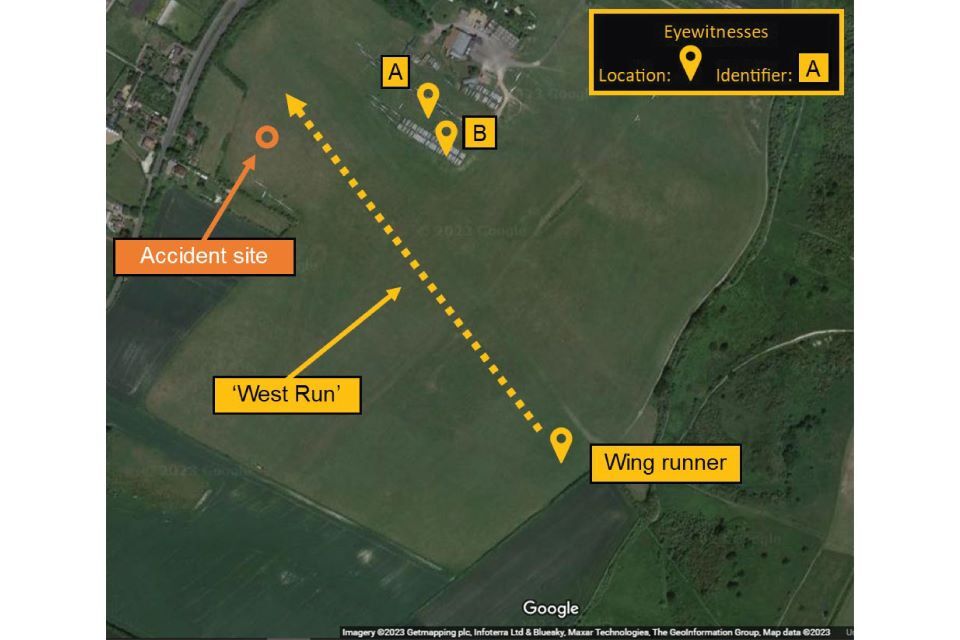The accident occurred during an aerotow launch from Dunstable Airfield. Eyewitnesses reported that, at an early stage in the launch, the glider’s vertical positioning behind the tug was unstable. While the pilot appeared to regain some control over the instability, shortly after the towing aircraft lifted off, witnesses noticed the tow rope had become detached from the glider, which was below 50 ft agl at the time. Despite the lack of traction from the towing aircraft, the glider continued to climb to between 50 and 100 ft agl before it entered a steep left turn with low and reducing airspeed. Shortly after entering the turn the glider yawed left and autorotated into an incipient spin before striking the ground nose first. Witnesses on the airfield arrived at the glider within 80 seconds of the accident but nothing could be done to save the pilot who had suffered fatal injuries during the accident sequence.
The investigation did not identify any mechanical issues with the tow release or other defects which could have led to an uncommanded release of the tow cable or adversely affected the controllability of the glider.
The investigation could not conclusively determine why or how the tow rope came to be released from the glider at an early stage in the takeoff. With the glider no longer connected to the towing aircraft, the accident pilot found himself in a challenging position, possibly suffering from the negative performance shaping effects of startle and/or surprise. With little height or speed available to him he needed to quickly decide on an appropriate course of action. That he decided to turnback toward the airfield indicates he did not consider landing ahead was a viable option. Tragically, at the height and speed he found himself, turning back proved unachievable.
This accident serves to highlight how challenging it is to make effective decisions when something goes wrong unexpectedly at a critical stage of flight. While pilots may verbalise their intentions as part of an eventualities brief, being able to enact the plan when startled, surprised and under extreme pressure, is not necessarily assured.

